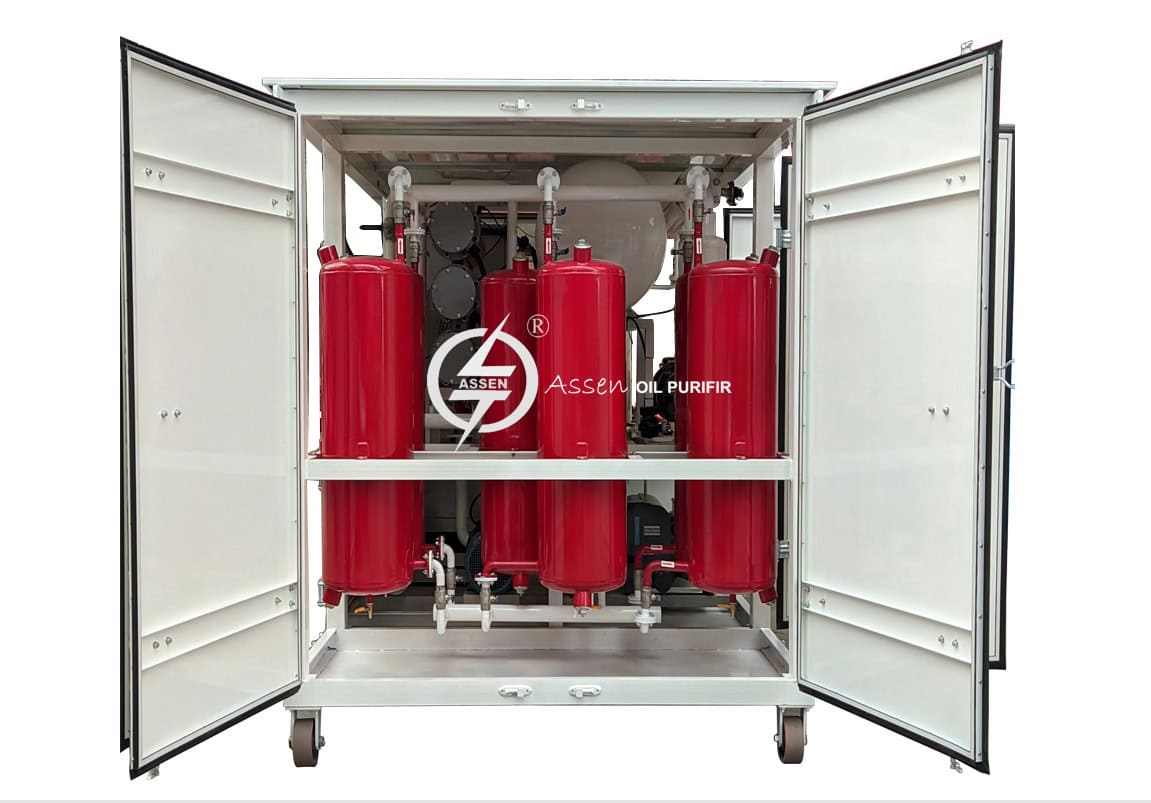Exactly How Regenerated Transformer Oil Extends Transformer Life-span
The duty of transformer oil is critical in making sure the reliability and durability of transformers, acting as both an insulator and coolant. Restored transformer oil offers an engaging option to boost these functions by effectively getting rid of damaging pollutants that jeopardize efficiency. Via a precise regeneration process, the oil's dielectric residential or commercial properties and thermal stability can be recovered, bring about substantial improvements in functional performance. Understanding the intricacies of this process and its broader ramifications for transformer upkeep discloses a pathway to not just expand life-span but additionally optimize expenses in power management systems.
Value of Transformer Oil
Transformer oil plays a crucial role in the effective operation of electrical transformers. It mainly acts as a shielding tool, making certain and avoiding electric discharges that elements run safely under high voltage problems. The oil's dielectric properties are essential to keeping the integrity of the transformer, as they decrease the threat of failings that could lead to costly downtimes or devastating events.
Along with its insulating capacities, transformer oil likewise works as a coolant. As transformers run, they generate warm that needs to be dissipated to stop overheating and subsequent damages. The oil distributes within the transformer, soaking up and transferring warm far from critical parts, therefore preserving optimal operating temperature levels.
In addition, transformer oil works as an obstacle against dampness and contaminants, which can compromise the performance and long life of the transformer. Its chemical residential properties aid in counteracting acids and various other by-products that might develop in time, contributing to the general health of the electric system.
Advantages of Regenerated Oil

Additionally, regenerated transformer oil has a lower level of contaminations, consisting of particles and pollutants that can degrade efficiency. This pureness not just improves the oil's thermal conductivity but likewise prolongs the functional life-span of transformers by reducing overheating threats. The enhanced thermal security of regrowed oil makes certain regular performance also under high operating temperatures, which is important for keeping transformer performance.
Another benefit is its environmental impact. Regrowed oil advertises sustainability by reducing waste and the requirement for brand-new oil production, thus decreasing the carbon footprint related to transformer maintenance. Reclaimed Transformer Oil. Moreover, the longevity of regenerated oil translates to reduced upkeep prices in time, as less oil adjustments and less frequent tools downtime are called for.
Refine of Oil Regrowth
The regrowth my explanation of transformer oil includes a systematic process developed to restore the oil's initial residential or commercial properties and boost its efficiency. This procedure commonly begins with the removal of the used oil from the transformer, which is then based on numerous filtration methods.
The very first step in the regrowth procedure is the purification, where solid impurities such as metal, dust, and sludge bits are eliminated. This is frequently complied with by vacuum distillation, which aids to get rid of moisture and unpredictable compounds, consequently boosting the oil's dielectric stamina.

Effect On Transformer Efficiency
Restoring the homes of regenerated transformer oil dramatically affects the total performance of transformers. Enhanced dielectric strength is just one of one of the most vital advantages, as it allows for far better insulation and lowers the chance of electric breakdown. This renovation leads to a more steady procedure under high voltage problems, eventually bring about raised efficiency.
Furthermore, the removal of pollutants and deterioration items during the regeneration process lessens useful reference the danger of getting too hot. Cleaner oil facilitates much better warmth dissipation, which is crucial for keeping optimal operating temperature levels. Therefore, the thermal efficiency of the transformer is boosted, permitting higher tons without endangering reliability.
Moreover, the chemical security of restored oil ensures extended operational life. It resists oxidation and degradation, minimizing the frequency of maintenance treatments and oil replacement. This stability not just adds to improved performance yet also straightens with sustainability objectives by reducing waste.
Future of Transformer Upkeep
As innovations in innovation proceed to reshape the landscape of electric design, the future of transformer maintenance is poised for considerable makeover. The integration of clever technologies, such as IoT sensing units and predictive analytics, allows real-time surveillance of transformer health and wellness, enhancing the capability to preemptively attend to problems before they intensify right into significant failures. This aggressive technique not only optimizes operational performance but also expands the life expectancy of transformers.
Furthermore, the application of expert system (AI) in information evaluation permits for more exact fault discovery and medical diagnosis. By leveraging artificial intelligence formulas, maintenance groups can determine patterns in operational data that human experts might ignore, causing even more educated decision-making.
Additionally, the adoption of green practices, consisting of using regenerated transformer oil, is readied to redefine upkeep procedures. This sustainable strategy not only reduces ecological influence however likewise improves the total wellness of the transformer.
Last but not least, the change towards automation in upkeep procedures is expected to enhance procedures, lower downtime, and lower prices. As these innovations proceed to evolve, the future of transformer maintenance will certainly come to be extra reliable, trustworthy, and sustainable, making certain the honesty of important electric facilities.
Conclusion
The usage of regenerated transformer oil considerably improves visit this page the operational durability of transformers. By effectively recovering dielectric toughness and thermal security, this oil plays a critical duty in mitigating threats connected with overheating and oxidation. The regrowth process not just gets rid of damaging contaminations however additionally decreases upkeep frequency and oil substitute expenses. Eventually, the adoption of regrowed oil represents an essential innovation in transformer maintenance, making certain optimum efficiency and sustainability in the monitoring of electrical framework.
The duty of transformer oil is vital in making certain the integrity and long life of transformers, serving as both an insulator and coolant.Transformer oil plays a crucial duty in the reliable procedure of electric transformers. Regrowed oil promotes sustainability by lowering waste and the demand for new oil manufacturing, therefore decreasing the carbon footprint linked with transformer maintenance.Recovering the residential properties of regenerated transformer oil considerably influences the total efficiency of transformers.The usage of regenerated transformer oil considerably boosts the functional longevity of transformers.